As you can tell from the last post, it is the apple season in the Batchelor house. Now crab apple jelly isn’t quite as easy as apple sauce, but it doesn’t need a degree in quantum physics either. The collection process is a little bit trickier, as you have to pick each apple individually, the tree tends to be in a harder to reach spot and can be sometimes prickly.
In order to make more than one jar of the jelly, you will need a lot of apples, mainly because the only thing you’re taking from the apple is the juice from the pulp once you’ve softened the apples. Once you’ve done it a couple of times, you’ll get a good idea of how many you need. This year we had about 2 1/2kg of uncooked crab apples, which yielded about 2 big Kilner jars (think 2 1/2 times bigger than a jam pot) as well as a normal sized jam pot.
As with the previous recipe for apple sauce, the ingredients list provided is a guide on the weights.
INGREDIENTS
- 4 kg crab apples
- 1 kg caster sugar
- 1 lemon, juiced
Note: Makes 6 x 500ml jars
METHOD
So as I mentioned, the recipe is pretty simple to follow and easy to get a consistent and tasty result.
Start by washing all of your fruit, sift through the apples removing stalks or any discoloured apples, which would otherwise ruin the taste of the jelly.
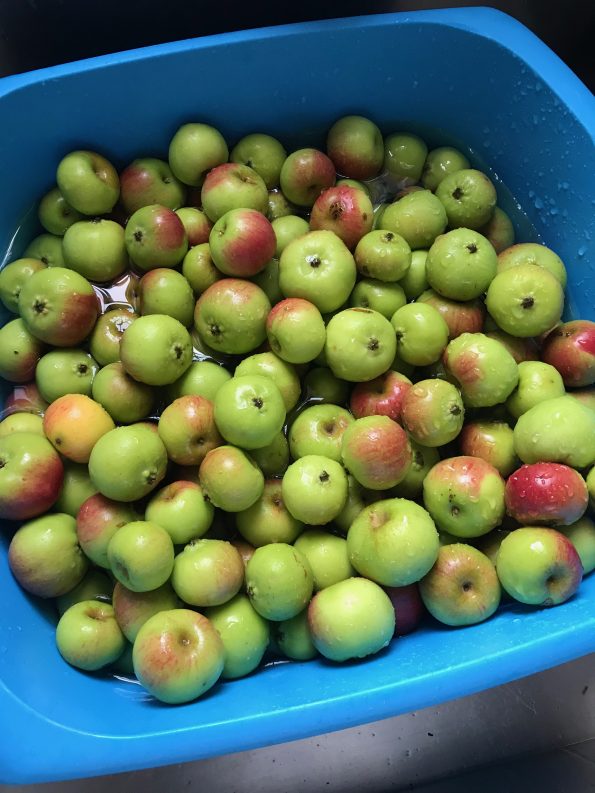
Then pop into a pan with the water just covering the fruit. Make sure you leave enough space for the fruit to expand.
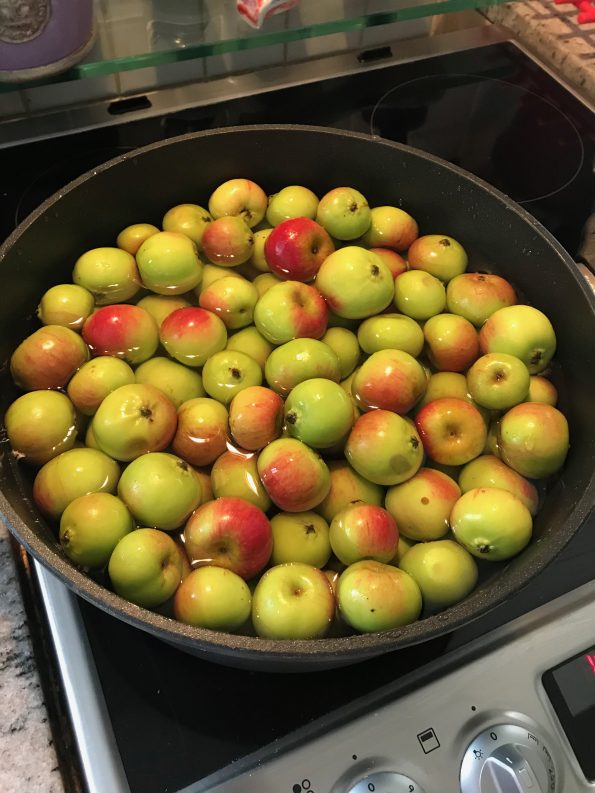
If you’ve got lots of crab apples, you can do a couple of pans at the same time…

You want to boil the apples until they begin to break down, but not completely…

Once done (after about 30 minutes), you want to scoop the softened fruit into your straining equipment.

I bought one from Lakeland and then realised I need many more, so Sarah popped to Coopers in Bishop’s Stortford when I was slaving away in the kitchen. We work well together!

There’s only one real rule when making the jelly, whatever you do, don’t squash the fruit in order to release the juice. Let it drip naturally, otherwise you’ll get cloudy jelly. A tip from me is to keep some of the water back, which already contains some of the juice and use it to supplement the dripping if you’re struggling to get lots.
The advice is to let the liquid drip for an evening to maximise the amount of liquid. I’ve done it both ways and don’t see a marked difference to be honest. It is the initial hour or two where you get most of your liquid.
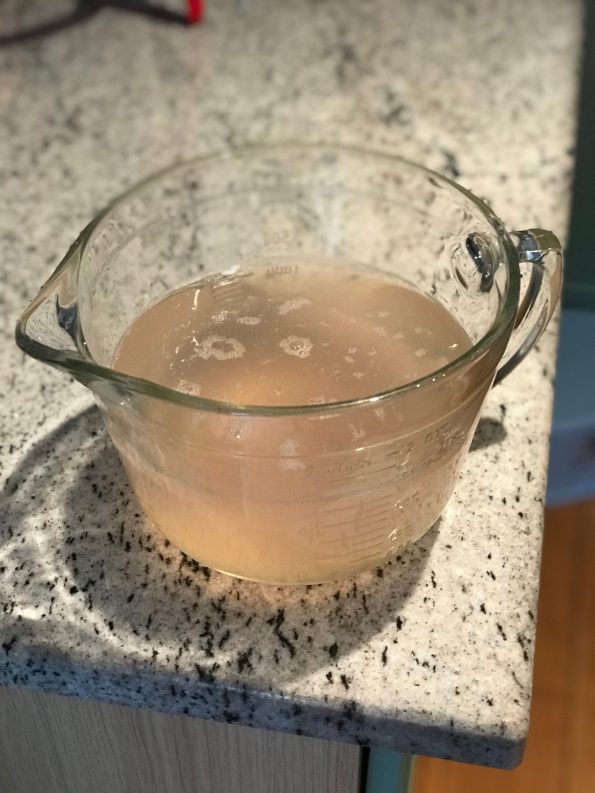
Once you have your liquid, you want to calculate the amount of sugar you need to add to create the jelly. The rule of thumb is 10 parts juice to 7 parts sugar. So measure or weigh your liquid and then and then add 70% of the measurement as sugar. Oh and by the way, it is a lot of sugar…

See what I mean? Once you’ve measured the sugar measured, you then want to take that sugar and add it to your juice in a pan.
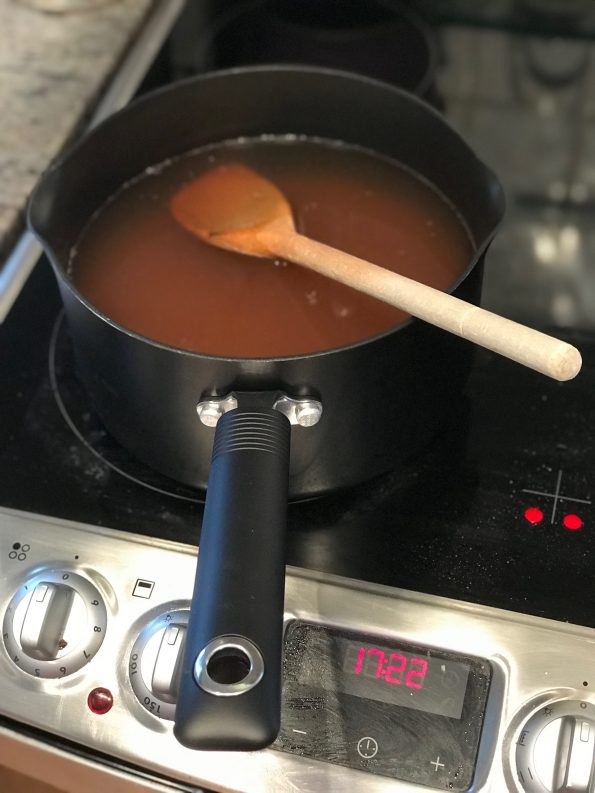
Heat on a medium heat until your sugar has dissolved. Once you get to a rolling boil you want to skim off any impurities / froth that comes to the surface with a tablespoon.
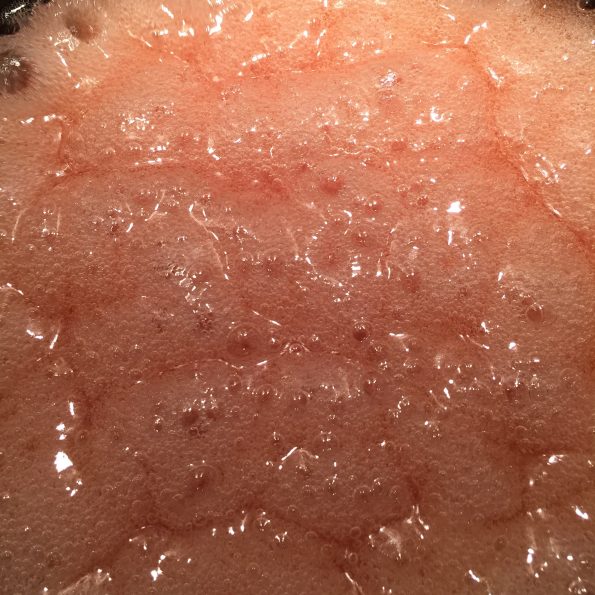
In order to test the readiness of the jelly, you want to take a cold spoon, preferably from the fridge, and dip the spoon in the jelly. If the drip solidifies, as below, you know you’re onto a winner! It’ll take about 40 minutes on a rolling boil.
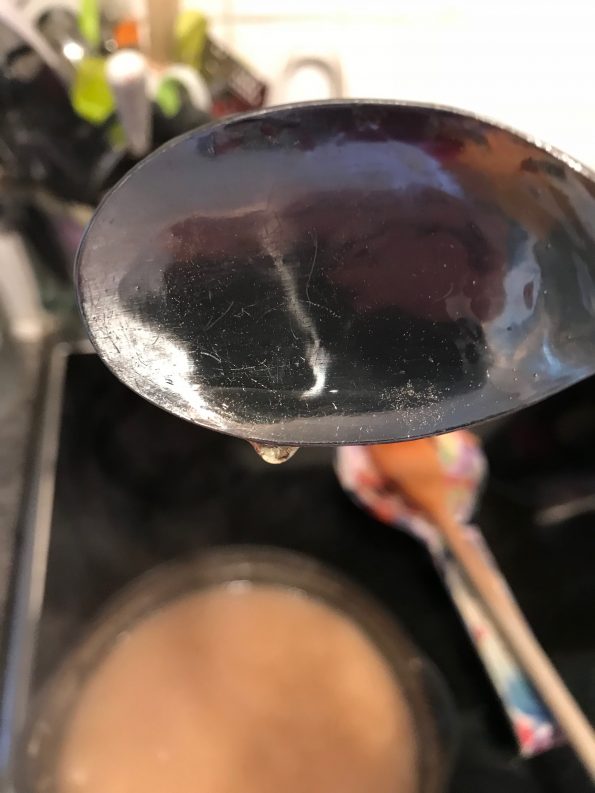
You then want to pour directly into a sterilised jar and close the lid tight. As the liquid cools down, the jars will form a natural vacuum and keep for a long time. We use Kilner jars given their ability to deal with high heats without cracking, nothing more annoying after you’ve been hard on extracting all the liquid over possibly several hours!
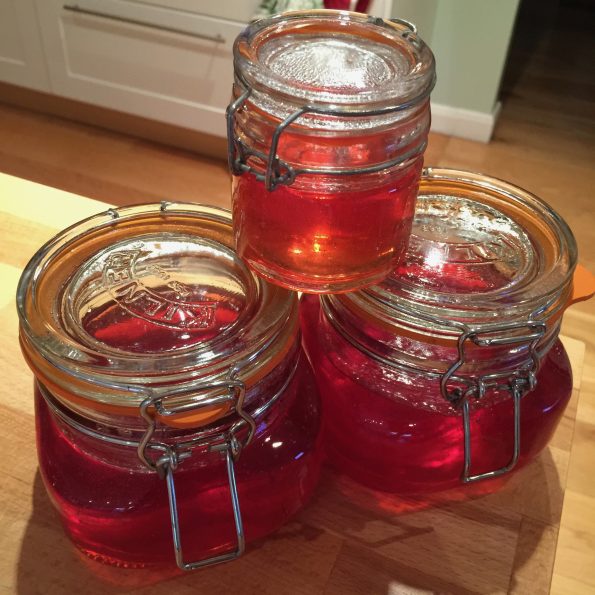
Why take a photo with one jar when you can do the same thing with three jars?!
Thanks for listening. Would love to hear how you get on.
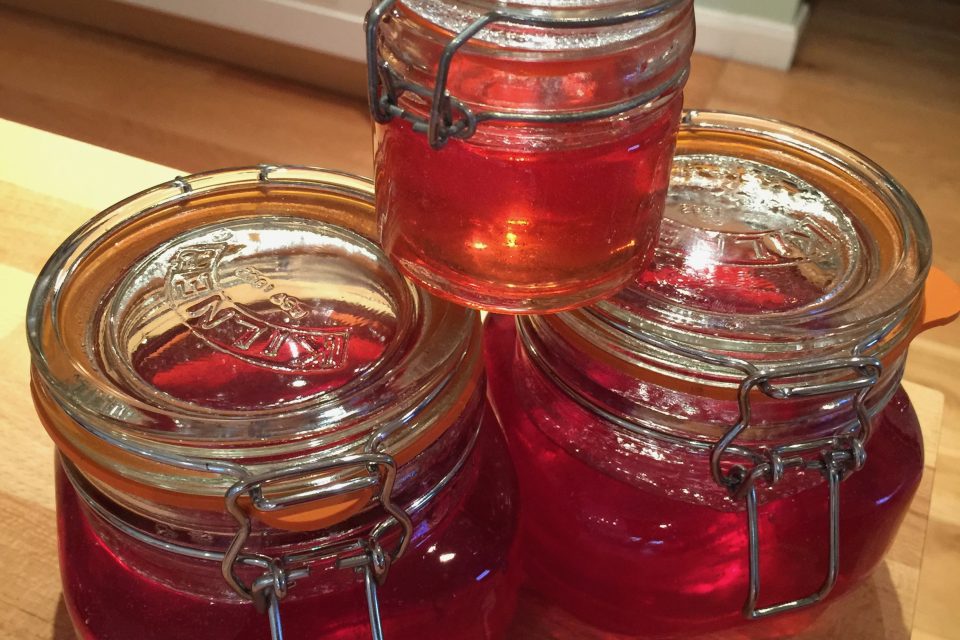
0 comments on “Crab apple jelly, distinctive light pink gold!”Add yours →